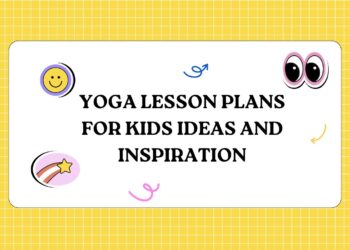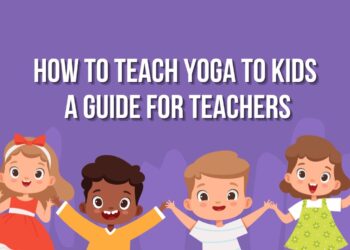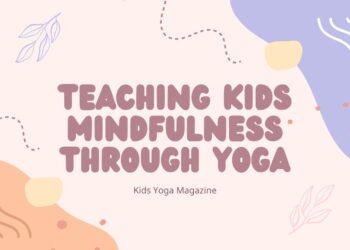As schools increasingly recognize the importance of mental and physical well-being in students, incorporating yoga into the school curriculum has become a popular and effective way to promote a balanced educational environment. Yoga offers numerous benefits, from improving concentration and emotional regulation to enhancing physical fitness. For teachers looking to introduce yoga in the classroom, here are some practical tips to integrate this practice into the school curriculum smoothly and effectively.
1. Understand the Benefits of Yoga in Education
Before incorporating yoga into the school curriculum, it’s important to understand the range of benefits it can offer to students.
- Improved Focus and Concentration: Yoga encourages mindfulness and deep breathing, which can help students improve their focus and attention in class. This is particularly beneficial during periods of intense study or before exams.
- Stress Reduction: Regular yoga practice helps students manage stress and anxiety by teaching them techniques to calm their minds and bodies. This can lead to a more relaxed and positive classroom environment.
- Physical Fitness: Yoga promotes physical health by improving flexibility, strength, and posture. It also helps in preventing injuries that can occur from sitting for long periods or carrying heavy backpacks.
- Emotional Regulation: Yoga teaches students how to connect with their emotions and manage them in a healthy way. This can lead to better behavior, improved relationships with peers, and a greater sense of self-awareness.
Tip: When introducing yoga to administrators or parents, highlight these benefits to build support for integrating yoga into the curriculum.
2. Start with Simple and Accessible Practices
When first introducing yoga to students, it’s important to start with simple and accessible practices that can easily be incorporated into the school day.
- Breathing Exercises: Begin with simple breathing exercises like “Balloon Breathing” or “Belly Breathing.” These can be done at the start of the day, during transitions between classes, or before exams to help students focus and relax.
- Basic Poses: Introduce basic yoga poses that are easy to perform in a classroom setting, such as Mountain Pose, Tree Pose, and Cat-Cow. These poses don’t require a lot of space and can be done standing or seated.
- Mindful Movement: Encourage students to practice mindful movement by focusing on how their body feels during each pose. This helps them develop a connection between their mind and body, which is essential for managing stress and staying present.
Tip: Keep sessions short, especially in the beginning. Even 5-10 minutes of yoga can make a significant difference in students’ focus and mood.
3. Incorporate Yoga into Daily Routines
To make yoga a regular part of the school day, integrate it into daily routines rather than treating it as a separate activity.
- Morning Yoga: Start the day with a short yoga session to energize students and prepare them for learning. This can include a few stretches and breathing exercises to help them wake up their bodies and minds.
- Transition Breaks: Use yoga during transitions between classes or subjects. A quick stretch or breathing exercise can help students reset and refocus, making it easier for them to engage with the next lesson.
- End-of-Day Relaxation: Conclude the school day with a calming yoga routine. This helps students unwind and reflect on the day, promoting a sense of closure and readiness for the evening.
Tip: Consistency is key. Regularly incorporating yoga into daily routines helps students develop a habit of mindfulness and self-care.
4. Create an Inclusive Environment
It’s important to create an inclusive environment where all students feel comfortable and supported in their yoga practice.
- Adapt Poses: Offer variations of poses to accommodate different abilities and comfort levels. For example, students who have limited flexibility can use props or modify poses to suit their needs.
- Encourage Participation: Make yoga accessible to all students by encouraging participation without pressure. Emphasize that yoga is a personal practice, and it’s okay if everyone’s poses look different.
- Foster a Positive Atmosphere: Create a classroom environment where students feel safe to express themselves and explore yoga at their own pace. Use positive reinforcement to encourage effort and progress, rather than perfection.
Tip: Highlight the non-competitive nature of yoga to help students focus on their own personal growth rather than comparing themselves to others.
5. Integrate Yoga with Other Subjects
Yoga can be a valuable tool for enhancing learning in other subjects. Consider integrating yoga with other parts of the curriculum to create a holistic learning experience.
- Physical Education: Yoga fits naturally into physical education classes, providing a low-impact, mindful alternative to traditional sports. It helps students develop strength, flexibility, and coordination.
- Mindfulness in Literature: Incorporate mindfulness practices into literature or social studies classes by exploring themes of self-awareness, emotional regulation, and empathy in books and historical events.
- Math and Science: Use yoga to teach concepts of balance, symmetry, and body mechanics, which can be related to math and science lessons. For example, explore how different poses demonstrate geometric shapes or principles of physics.
Tip: Collaborate with other teachers to find creative ways to integrate yoga into various subjects, making it a cross-curricular activity.
6. Engage Parents and the School Community
Gaining support from parents and the broader school community is crucial for the successful integration of yoga into the curriculum.
- Parent Workshops: Host workshops or information sessions for parents to explain the benefits of yoga for students and how it will be implemented in the school. This helps alleviate any concerns and encourages support from families.
- Community Events: Organize school-wide yoga events or family yoga nights to involve the entire community. This promotes a culture of wellness and shows the school’s commitment to the holistic development of students.
- Regular Updates: Keep parents informed about the yoga program through newsletters, emails, or social media. Share the progress and positive outcomes you observe in the students, such as improved focus or better behavior.
Tip: Engaging the school community in the yoga program builds a supportive environment that reinforces the practice both at school and at home.
Conclusion
Incorporating yoga into school curriculums offers a multitude of benefits for students, from enhancing physical fitness to improving focus and emotional well-being. By starting with simple practices, integrating yoga into daily routines, creating an inclusive environment, and engaging the school community, teachers can successfully introduce yoga into the classroom. This holistic approach to education not only supports students’ academic success but also nurtures their overall development, helping them grow into balanced and mindful individuals.










